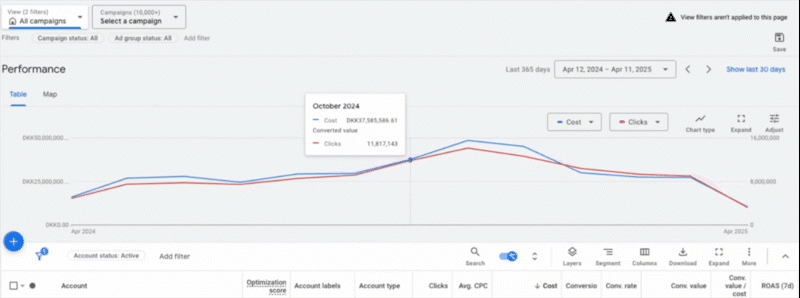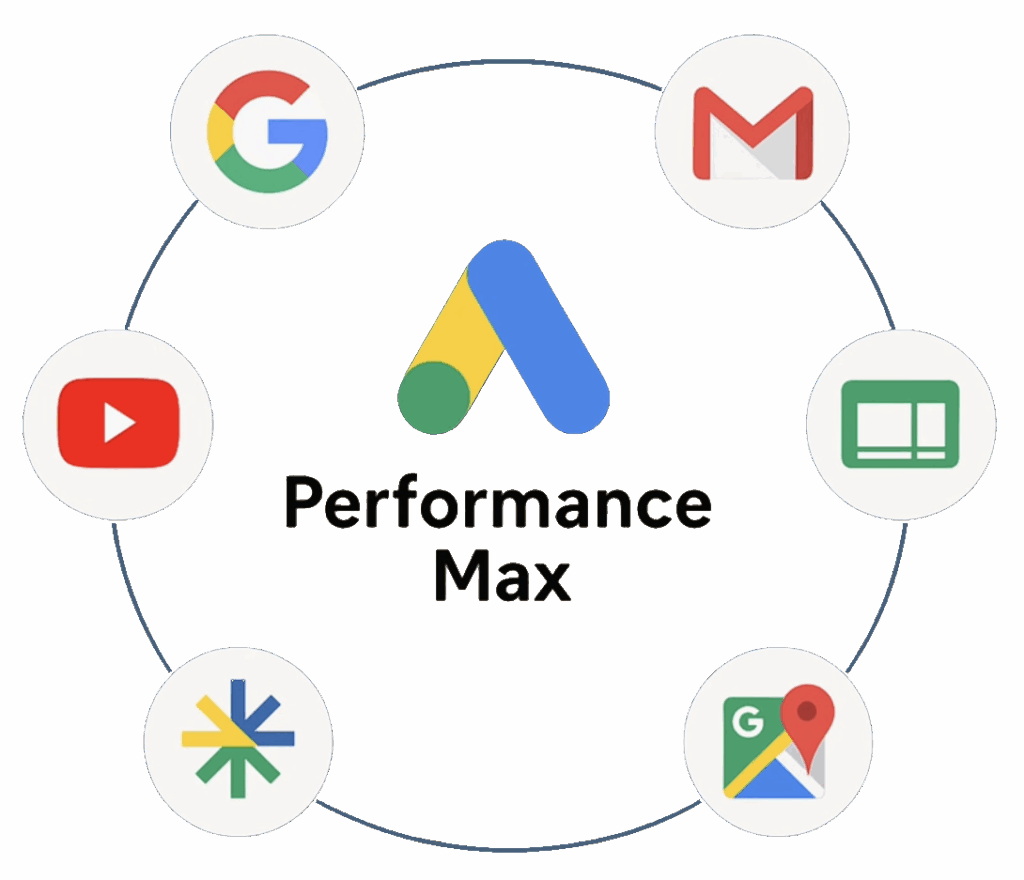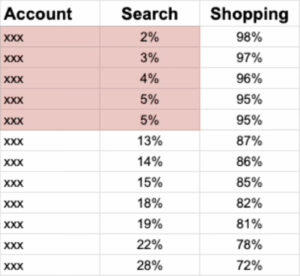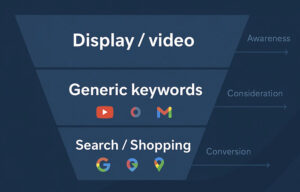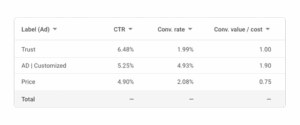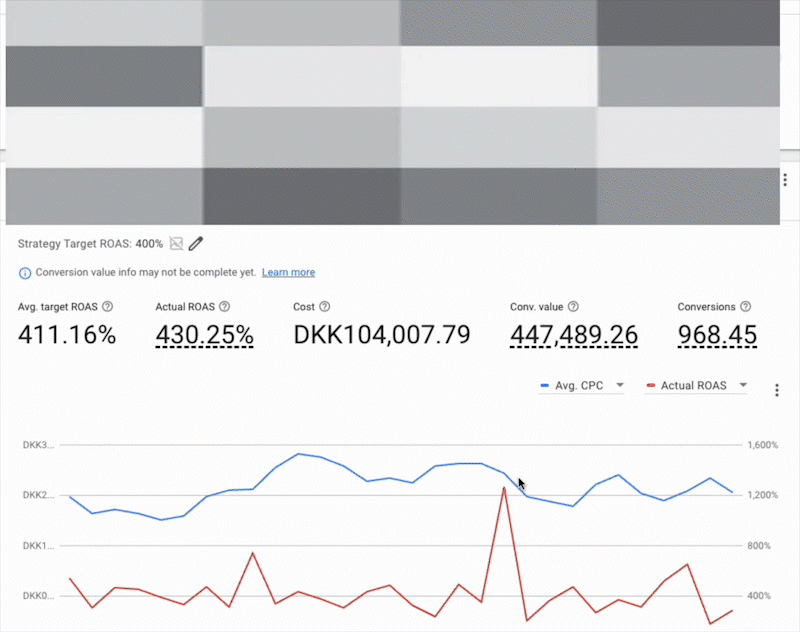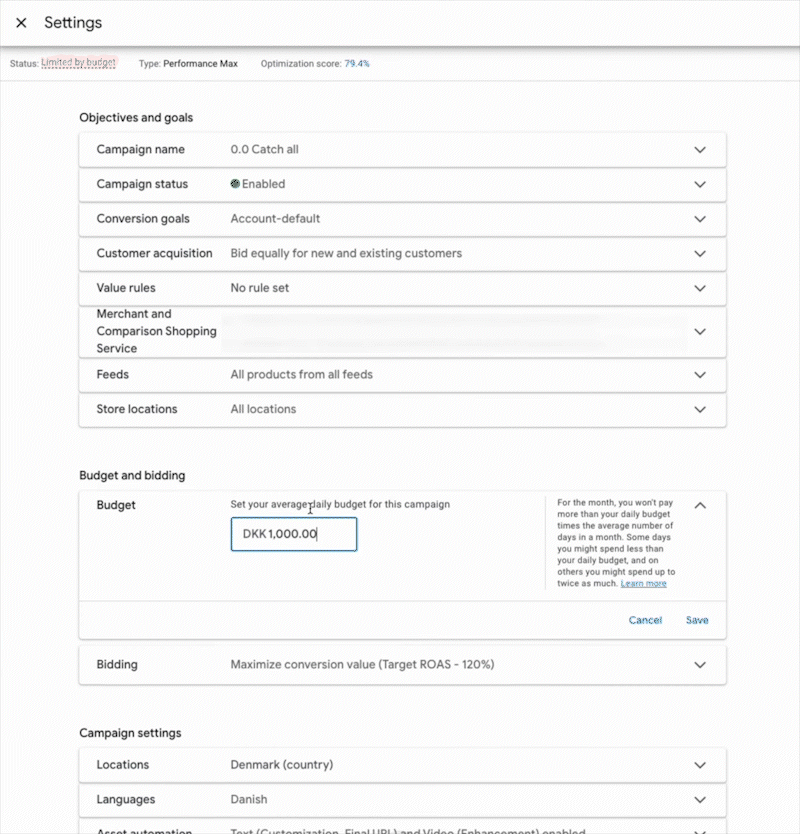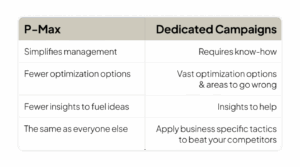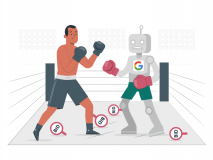After managing millions in Google Ads spend, I see the same Performance Max mistake over and over again. Brands are sold on the idea that PMax is a full-funnel campaign, that they should consolidate everything into a single campaign and just let Google’s “advanced AI” figure it out.
The pitch is always the same. First, the algorithm is smarter than you, so don’t even try to beat it. Second, PMax will magically push top-funnel users through Display and Video to feed your Search campaigns. It sounds great in a sales deck, but in reality, it’s a recipe for stagnation.
The problem is that this entire approach is built on a foundation of flawed assumptions: that all your products are equal, that Search and Shopping perform optimally with the same ROAS target, and that PMax actually targets top-of-funnel traffic. All of these are demonstrably wrong.
Go Beyond the Article
Why the Video is Better:
- See real examples from actual client accounts
- Get deeper insights that can’t fit in written format
- Learn advanced strategies for complex situations
The Flawed Logic of a Single PMax Campaign
Before you hand over the keys to a single, consolidated PMax campaign, you need to understand the faulty logic it’s built on. The entire strategy falls apart under the slightest scrutiny.
Flaw #1: Assuming All Your Products Are Equal
No e-commerce business treats all its products the same, so why would you let your ad campaigns? You have bestsellers, unprofitable items you need to move, long-tail products, and new arrivals. Each category has different margins, different conversion rates, and requires a different strategy.
For instance, in one of our accounts, the products we classify as “Bestsellers” have a much better conversion rate than the ones we call “Saboteurs” (our term for unprofitable products). Then there’s the “Youth Academy”—products that don’t have enough traffic yet to be properly categorized. They all perform differently, and they need to be treated differently. Forcing them all under a single ROAS target is just lazy management.
Flaw #2: Believing Search and Shopping Have the Same Goals
This is a huge one. The idea that Search and Shopping will perform optimally under the same ROAS target is nonsense. In our accounts, we see wild variations. Some accounts might only have 5% of their PMax spend going to Search, while healthier accounts are closer to 20-28%.
Why the difference? Because Search and Shopping are different beasts. Shopping can routinely produce a higher ROAS than non-branded Search. If you want to grow, you need to figure out the optimal ROAS for Shopping that maximizes volume and profit, and then do the same exercise separately for Search.
Think about it: it’s far better for growth to be barely profitable on a $20,000 monthly Search spend than to be very profitable on a $5,000 spend. The higher spend drives more stability, more traffic, and more data for future optimization. Limiting your spend just to be as profitable as possible *right now* is a classic mistake advertisers make when they’re trying to grow.
Flaw #3: The Myth of PMax as a Top-Funnel Tool
This is a very common misunderstanding, and I think I know where it comes from. People see “Display” and “Video” and automatically think “top-of-funnel.” That’s not how it works here.
Remember, the Display and Video placements within PMax are tied to the exact same ROAS target as your Search and Shopping ads. To hit a high ROAS target on a push channel like Display, the algorithm has to go after the lowest-hanging fruit. And what’s that? Retargeting.
Just because you’re running push advertising doesn’t mean you’re actively targeting people at the top of the funnel. The vast majority of those impressions are going to people who have already visited your site.
What You Really Gain (and Lose) with PMax Consolidation
To be fair, there are some minor wins from consolidation. You aggregate your data for Smart Bidding, which can help if your previous setup was too granular. You also tap into Dynamic Search Ads, catching search queries you might have been missing. And yes, you get some retargeting on Display and Video, though in most accounts, it’s still a very small amount of conversions.
The issue is what you give up in return. If you know what you’re doing in Google Ads, PMax strips away your ability to actually improve things. Here are just a few examples of critical optimizations you can no longer perform:
- Ad & Landing Page Testing: You can’t run meaningful tests within PMax. We recently ran a simple ad copy test for a client where we used ChatGPT to create a new, customized angle. It converted 2-3 times better than their existing ads. That kind of basic, high-impact optimization is impossible inside a consolidated PMax campaign.
- Granular Target Setting: You can’t set different ROAS targets for different keyword types. A broad term like “running shoes” might need a lower ROAS to capture maximum volume, while a specific brand term can handle a much higher target. PMax gives you no control over this.
- Advanced Bid Strategies: I love portfolio bid strategies. They allow you to aggregate data from multiple campaigns, giving the system more to work with and giving you more control over things like max CPCs. This is off the table.
- Performance Analysis: This is the dealbreaker. When everything is lumped together, you have no way to know what’s actually happening when performance changes.
The “Black Box” Problem: What Happens When Performance Stalls?
Look, if everything is going up and to the right, I don’t really care how it happens. Let’s all sit back, count our money, and be happy. But that’s the best-case scenario, and it never lasts forever.
The conversations we have with new clients often start like this: “We’ve been running PMax, it did well for a while, but now we’ve been stagnant for 6, 9, or 12 months.”
Once performance drops or stagnates, the black box becomes a nightmare. Is it because Search is underperforming? Is Shopping getting hit? Is it our brand keywords? Is competition increasing? You have no idea, because the data is hidden from you.
Worse, even if you could figure out what’s wrong, you have very few levers to pull to fix it. You can change the budget or the ROAS target, but what does that really solve? You can play with asset groups (which rarely does anything meaningful). Everything is good until it’s not, and when it’s not good, you’re powerless.
The Alternative: A Structure Built for Growth
The opposite of this consolidation strategy is to run dedicated campaigns for Search and Shopping. This means search campaigns targeting your brand, category, and generic keywords where you can test ads and find the ideal ROAS. It means using Standard Shopping with a sophisticated campaign structure that isolates performance without splitting your data so thin that Smart Bidding breaks.
(And by the way, you need at least 300 conversions per month per bid strategy for it to perform well in e-commerce. I know that’s different from Google’s recommendations, but I disagree with their recommendations a ton.)
PMax is focused on simplifying management. It gives you fewer optimization options and fewer insights. It’s fine if you don’t have the skill set to run a more advanced setup, but if you’re stagnating, you need to understand there is another level.
Moving to standalone Search and Shopping campaigns works incredibly well. It requires experience and know-how, but it opens up a vast array of optimization options and gives you the insights you need to make intelligent decisions. It’s how you actually take things a step further.
[TL;DR]
- Throwing everything into a single PMax campaign is like throwing pasta at a wall to see what sticks. It’s based on flawed assumptions about your products and channels.
- PMax is not a top-funnel tool. Its Display and Video traffic is almost exclusively retargeting due to shared ROAS targets with Search and Shopping.
- Consolidating into PMax removes critical growth levers like ad testing, channel-specific bidding, and deep performance analysis.
- When performance inevitably stagnates in PMax, its “black box” nature leaves you with no insights into the cause and no real tools to fix the problem.
- Dedicated Search and Shopping campaigns require more expertise, but they provide the control, visibility, and optimization options necessary to sustainably grow your account.

